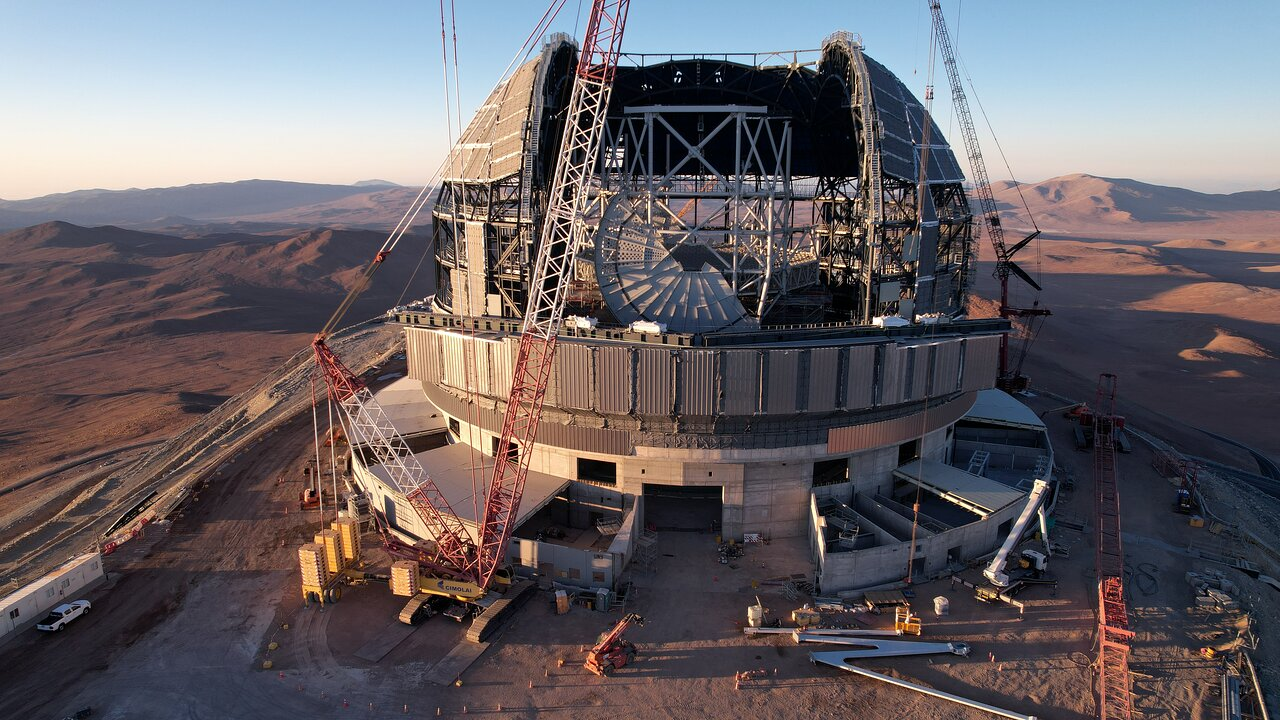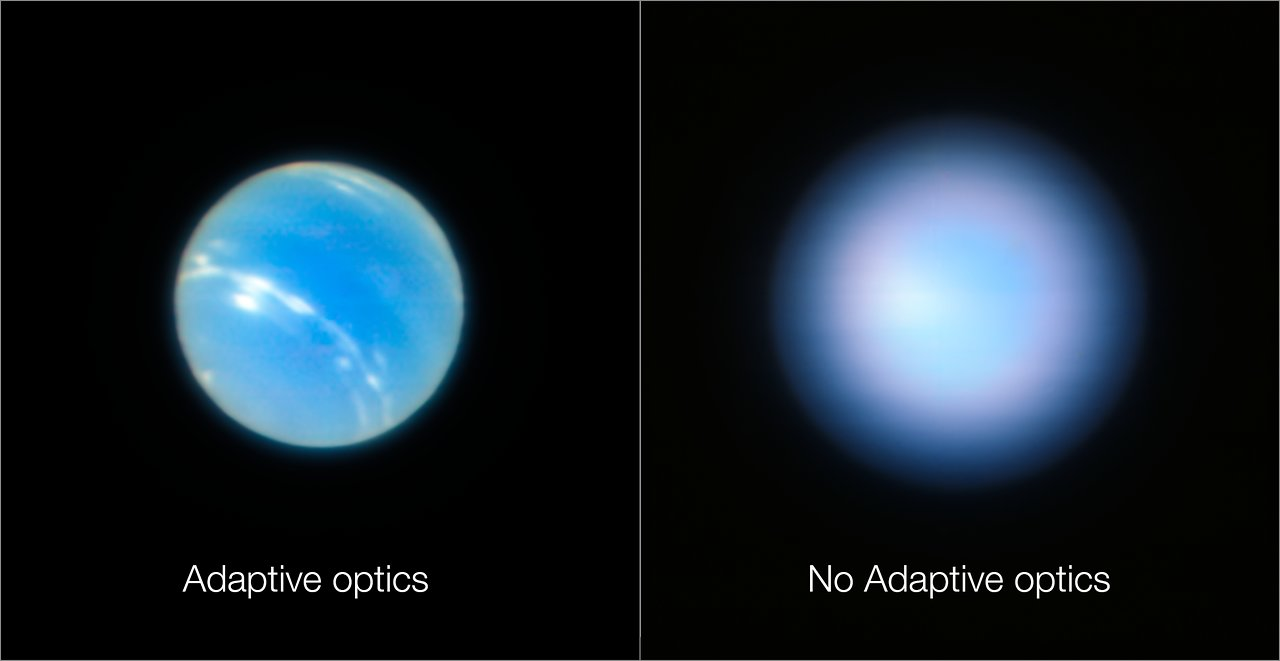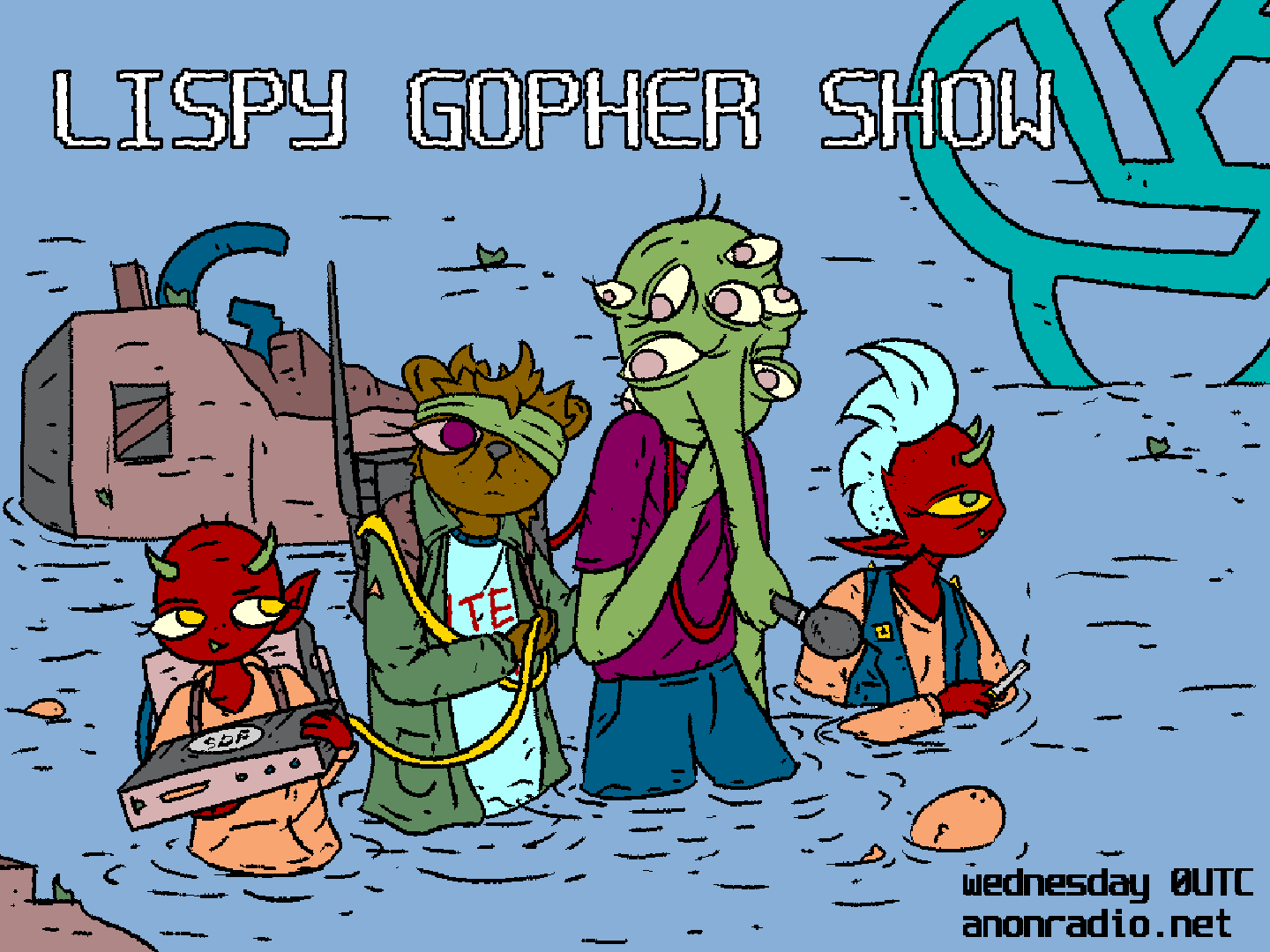Astronomers have a love-hate relationship with the atmosphere: it's great for, you know, not dying, but it blurs astronomical images. In the latest episode of Chasing Starlight we tell you the inner workings of adaptive optics, a technique where we use powerful lasers and fast shape-shifting mirrors to measure and correct atmospheric turbulence:
astrophysics
#Introduction Hi #fediverse ! We’re the European Southern Observatory, and we design, build and operate ground-based telescopes.
One of them is our Extremely Large Telescope, currently under construction in #Chile. It will have a 39 m mirror, and its rotating enclosure will weigh 6100 tonnes, or about 700 mastodons!
We’re looking forward to chatting with all of you about #astronomy
📷 ESO/G. Vecchia
#HappyNewYear 🎉 Boost your #NewYear resolution with adaptive optics. By deforming a thin flexible mirror a thousand times per second you can correct atmospheric turbulence and get sharp astronomical images!
➡️ https://www.eso.org/public/teles-instr/technology/adaptive_optics/
📷 ESO/P. Weilbacher (AIP)
Astronomers have long thought that the upper clouds of Jupiter, which create the planet’s iconic pale brown belts, are made of frozen ammonia.
But the joint efforts between an amateur astronomer with his backyard telescope 🔭 and professional scientists with ESO's Very Large Telescope (VLT), have now shown that they're actually made of something completely different 😲
Most likely, they are made of ammonium hydrosulphide mixed with smog, although vertical convection can sometimes bring ammonia ice clouds to the top.
Read more: https://www.eso.org/public/videos/potw2502a/?lang
8pm Tuesday Boston time
#lispyGopherClimate #commonLisp #astrophysics #supercomputing #softwareEngineering #archive , https://communitymedia.video/w/9kysH4ZwVuP4J4erZozqFT we will have (now done) a live interview with
https://as.tufts.edu/physics/people/faculty/ken-olum
about the recent largest-ever cosmic string simulation also introducing their new spacetime-volume pseudo-parallel simulation technique, relating to gravitational backreaction.
People sometimes ask, "who uses common lisp today".
Olum learned #lisp from John McCarthy.
Astronomers trace massive cosmic explosion back 12 billion years. 'This is the most distant event where we can directly see light escaping from around stars'. Via @spacedotcom #Space #Astrophysics #OrbitalMechanics #Astronomy 🚀 🌌 ☄️ 🛰️
Astronomers trace massive cosm...
Since this https://chaos.social/@Skorpy/115037963703138114 is getting some traction right now, I would like to alert #astrodon folks that I have created this starter pack https://fedidevs.com/s/NjA2/ and that you may be in it: for a *very* loose definition of Germany, it's "Astronomy in Germany".
Accounts that have opted in to discovery features can be added to starter packs without further confirmation. So if you find yourself a part of this and want me to *remove* you, please let me know and I'll try to do this quickly, before it spreads too widely.
If you think you should be on that list, but are not, because of oversight on my part, or because of missing opt-in to account discovery so far, which you would now like to change, also feel free to let me know.
The idea is to have a presentable starter pack ready at the time of #ag2025goerlitz for https://ag2025.astronomische-gesellschaft.de/view_abstract.php?id=39


